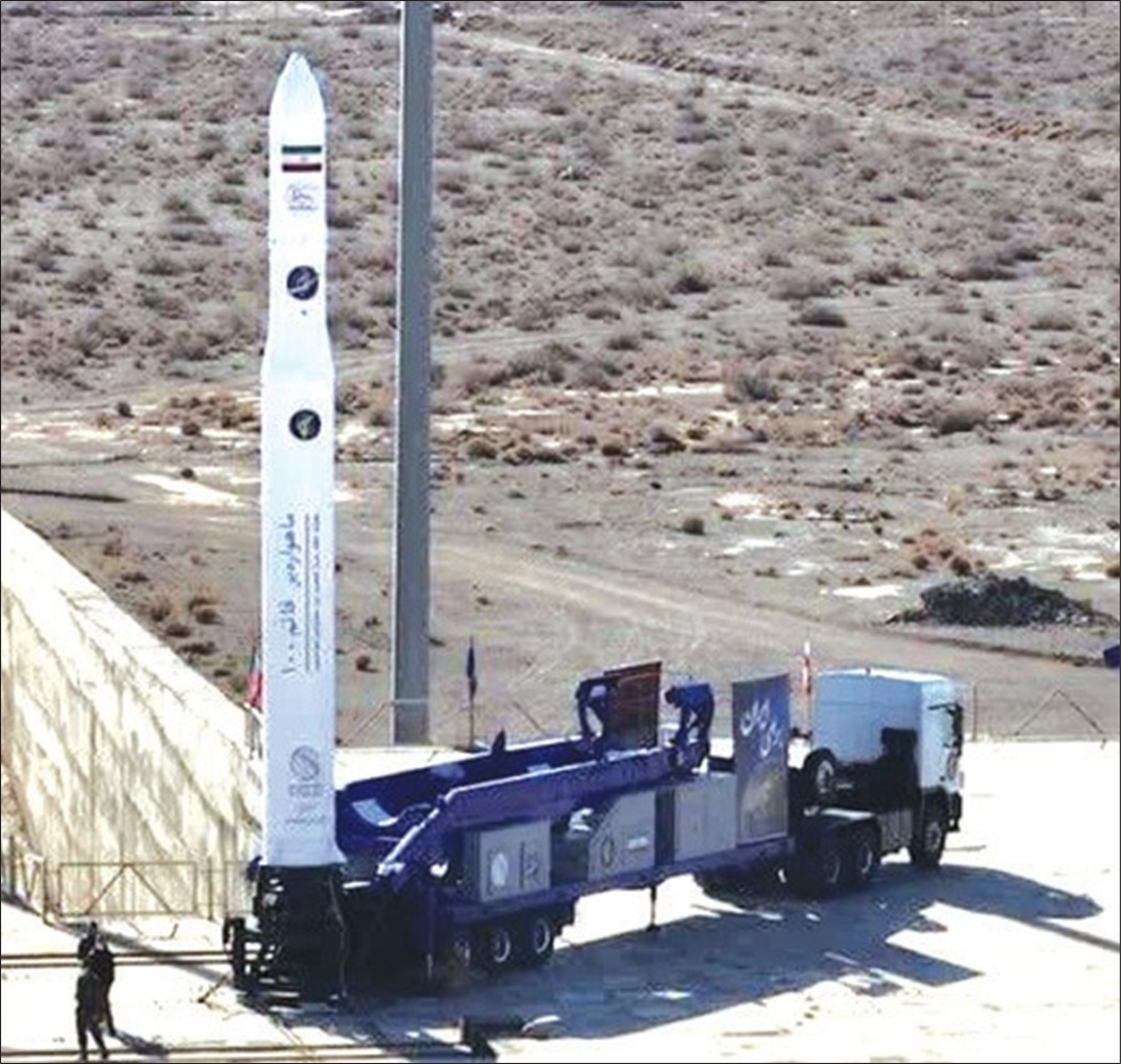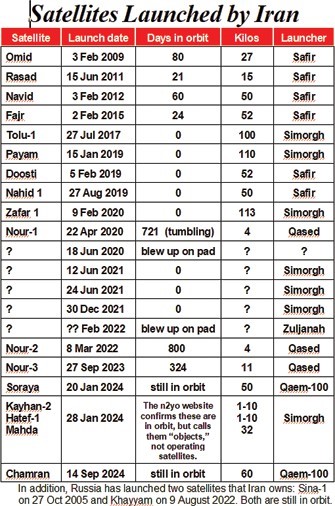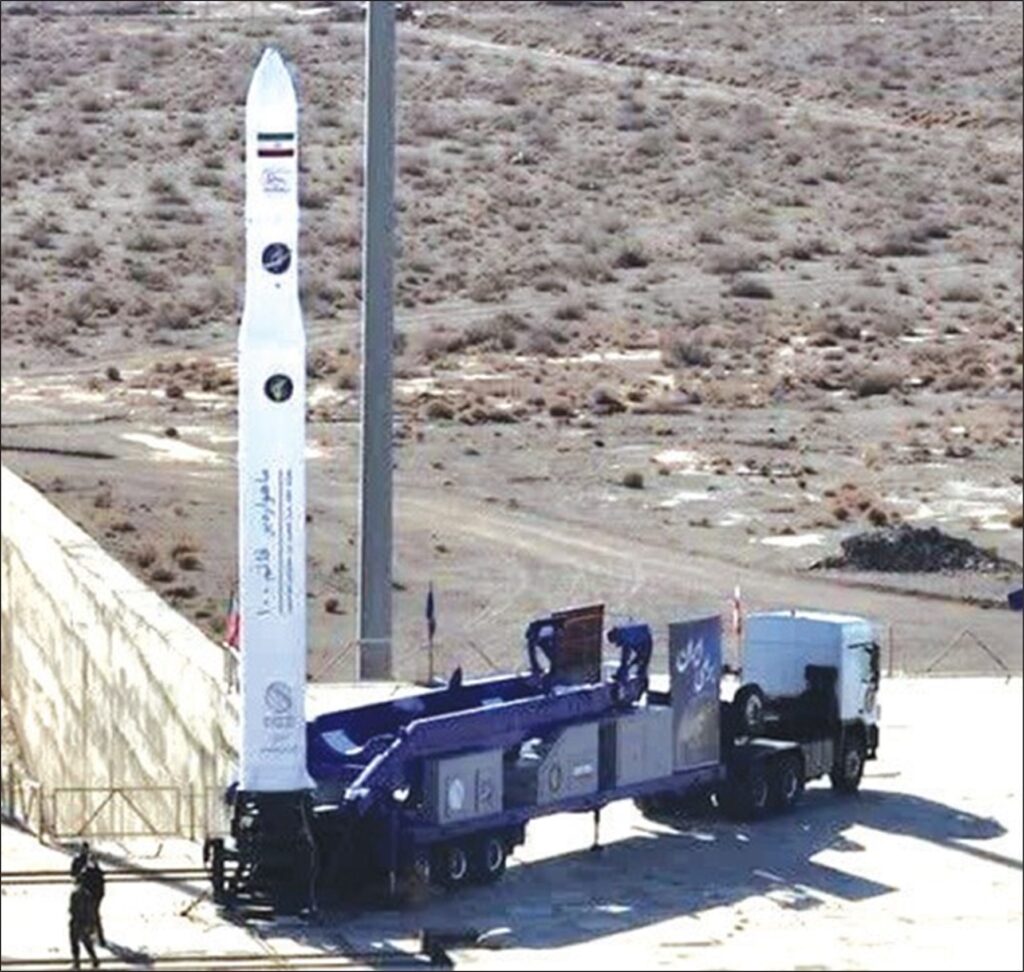October 25, 2024
by Warren L. Nelson

The fact that a Pasdar rocket was involved sparked objections from the West, where governments have long complained Iran’s space program is a cover for developing its military’s ballistic missiles. The government said the satellite weighed only 60 kilos (132 pounds), nowhere near a record for Iran, whose satellites have mostly been rated “microsatellites,” weighing 10 to 100 kilos, with two being “mini-satellites” weighing 100 to 180 kilos.
The Chamran was put into an orbit 550 kilometers (340 miles) above the earth, which is a low orbit. Iran said the purpose of the new satellite is to “test hardware and software systems to prove orbital maneuvering technology,” meaning technology such as tiny rockets attached to a satellite that allow it to adjust its orbit.

Truck-mounted rockets are normally military missiles that are carried on trucks to evade enemy attack by staying on the move. Iran issued a photo of the rocket on the truck. The three-stage Qaem-100 is also a solid-fueled rocket. Solid-fuel is normally used by military rockets, but not civilian rockets, because solid-fuel allows a rocket to be launched quickly, whereas with liquid fuel operators must wait hours to load the fuel before they launch, which is less practical for military missiles but doesn’t matter for commercial launches.
Those factors raised eyebrows in the West, where governments say Iran uses its satellite program as a cover for testing improvements in its military missiles. Iran routinely focuses on the tiny satellites its fires into space, boasting about its mastery of satellite technology. The West normally focuses on the rockets used to launch the satellites, seeing the rockets as the key technology.
The Qaem-100 was used once before to launch a satellite. That was last January 20. The Soraya satellite it put in orbit then is the only Iranian-launched satellite remaining in orbit. It reached an altitude of 750 kilometers, the highest yet for any Iranian-launched satellite. The Iranian Space Agency announced a few months ago that it plans to orbit six- to-eight satellites this Persian year, some of them atop Russian rockets fired from Kazakhstan. Two other satellites launched by Iran fell out of orbit in recent months and burned up in the atmosphere as they descended. They are the Nour-2, a 4-kilo nano-satellite launched March 8, 2022.
It plunged to earth May 17 on its 800th day on orbit. That is by far the longest any Iranian-launched satellite has tayed on orbit. Most Iranian satellites have not survived even 100 days in orbit. The other satellite to fall out of orbit this year was the Nour3, launched September 27, 2023, which fell out of orbit August 16 after 324 days in orbit, the third longest duration Iranianlaunched satellite. The lifelength of the two Nour satellites indicates Iran’s space program is learning better how to get satellites into an orbit that will survive.
Iran owns two other satellites that remain in orbit. They are the Khayyam, launched August 9, 2022, and the Sina-1, launched almost two decades ago on October 27, 2005. Both of those are Russian-made satellites that were launched from the Russian launch center in Kazakhstan. Iran has said nothing in many years about the Sina, suggesting it is no longer functioning, but it remains in orbit far, far longer than any Iranian-launched satellite.
When Hassan Rohani was president from 2013 to 2021, he downgraded the satellite program, presumably seeing little value for the high costs. Only eight satellites are known to have been launched during his eight years. When Ebrahim Raisi became president, he resurrected the program. The last three years have seen eight launches, more than double the rate of the Rohani Administration.
It isn’t known how President Pezeshkian feels about the space program. He has said nothing about it, either as a candidate or as president. The latest launch, six weeks into his presidency, was presumably already scheduled before he took office.

